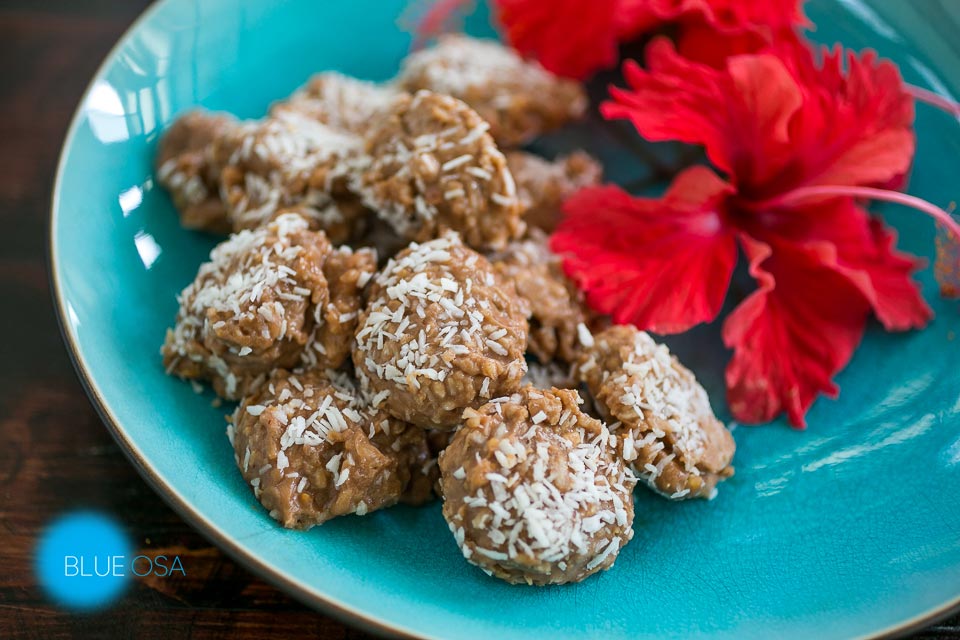A couple of weeks ago a friend sent us a recipe for fudge which we promptly gave to Marie asking if she could make it. The staff always keep a special stash of sweets at Blue Osa for our emergencies. Marie, being Marie, promptly said “Ah Oui!” and Blue Osafied the recipe in her own french image. Being a master at culinary fusion, she created an afternoon snack guaranteed to satisfy everyone’s sweet tooth.
Caramel Chocolate Peanut Butter Fudge
From the Kitchen of Blue Osa
Gluten-free, sugar-free, vegan and some protein.
Ingredients:
(We might suggest doubling this recipe and storing it in the freezer for future snacks.)
1/3 cup crunchy or smooth peanut butter (crunchy peanut butter gives the balls more body)
1/4 cup cold pressed coconut oil (Melted)
2 tbsp coconut cream (we have heard that if you are in the USA, Trader Joe’s Coconut Cream Extra Thick and Rich is the best)
1 tsp sea salt
1/2 cup organic dark chocolate chips
2 – 3 tbsp coconut flakes
Some coconut flakes to fudge balls
Directions…..
IN A FOOD PROCESSOR ADD AND BLEND.
– Peanut Butter (I used CRUNCHY because I did not have SMOOTH…and I think it would probably be BETTER with CRUNCHY because it has more body.)
– Coconut oil
– Coconut cream
Add this mixture to a small sauce pan and, using minimal heat, stir constantly for about five or ten minutes, not allowing the mixture to cook or bubble. Add the chocolate chips, the 2 to 3 tbsp flaked coconut and the sea salt.
Place sauce pan into the freezer to thicken, checking every three or four minutes until the mixture is thickened but still malleable.
Grease a small cake pan or square pan and add some coconut into the bottom of the pan. Start forming the mixture into one inch balls and roll in the coconut. Set each ball to one side and form the rest of the mixture into little balls, leaving them in the pan.
Cover the baking pan with some plastic wrap and place in the fridge. Within a couple of hours, they are ready to eat.
Buen Provecho from Blue Osa Yoga Retreat + Spa
Please share with us your experiences in making these recipes in the comments section below.






